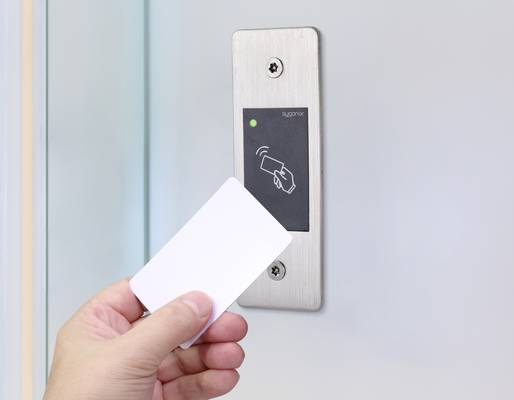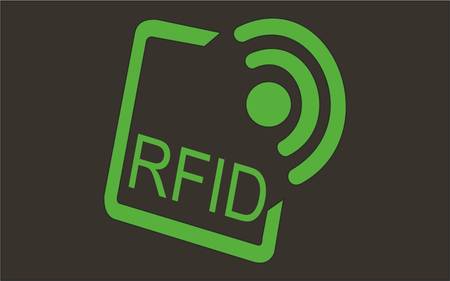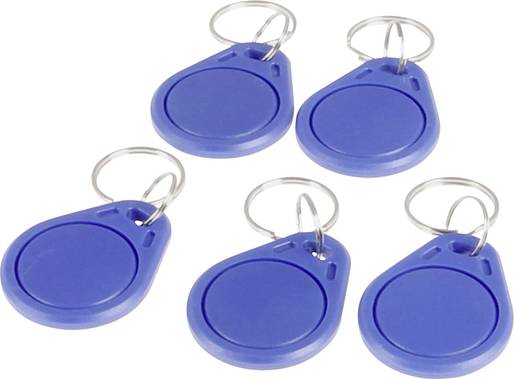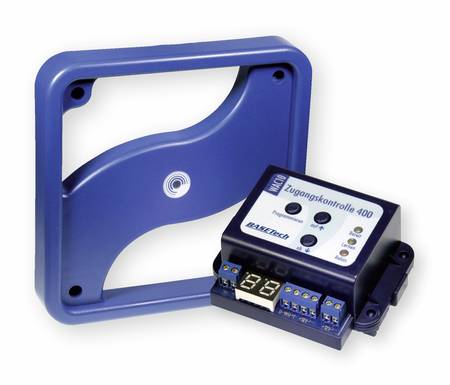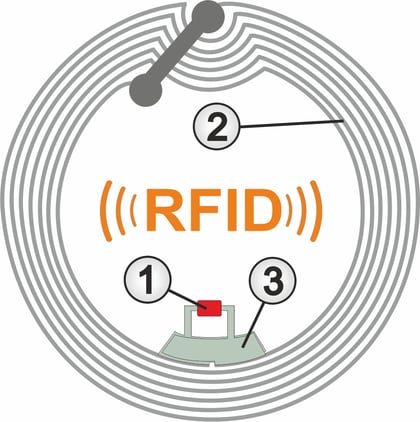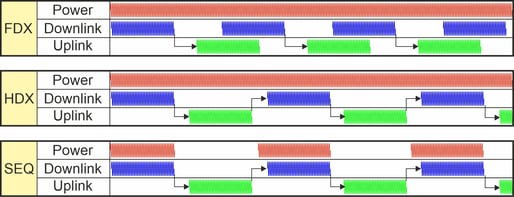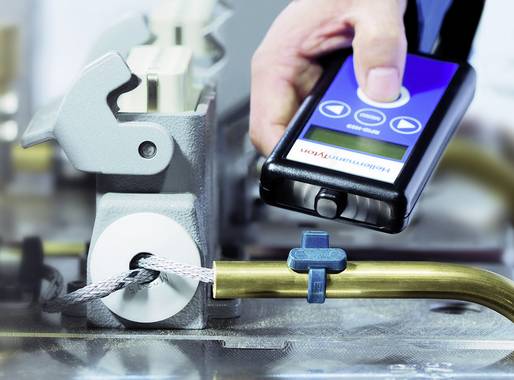RFID - Radio Frequency Identification: Technology with RFID chips explained simply
Published: 31.08.2022 | Reading Time: 9 minutes
This text is machine translated.
Quick and easy identification is an extremely important issue in many areas these days. This ensures that only authorized persons can enter certain offices or production facilities. So-called RFID chips are used for reliable control and approval of access authorization.
But RFID technology can do much more. It can also be used to tag objects or products. This makes it possible to ensure that unpaid goods cannot be carried out of a store unnoticed. RFID technology is also used in the automotive industry, for example to enable efficient immobilizers or to optimize production processes. RFID systems are even used for animals. When dogs or cats are found, the owners can be identified very quickly. We would be happy to explain the technology behind RFID and exactly how it works.
The term RFID comes from the English language and is the abbreviation for Radio-Frequency-Identification. Loosely translated, the term means “radio identification”. In other words, identification that works with the help of electromagnetic waves.
As the relevant data is transmitted wirelessly in this process, direct contact is not necessary, as is the case when reading a memory card, for example.
This contactless technology makes it much easier and cheaper to implement many processes in industry, retail and logistics.
Various hardware components are required for the efficient use of RFID technology.
RFID reader
The heart of an RFID system is the RFID reader, on which one or more RFID transponders are operated. The reader can be installed in a stationary position, for example to perform switching functions on an electric door opener or a turnstile.
If required, the recorded access data including date and time can also be saved, logged and further processed via an internal database or an externally connected system (PC). However, there are also mobile RFID readers that show the information read from the transponder on a display. In some cases, RFID readers are also used to transfer the required data to the RFID transponders.
RFID transponder
The term transponder is a mixture of “transmit” for transmitting and “respond” for responding. And that is exactly what RFID transponders do: they transmit the information stored in them as a response.
The transponder is therefore a mobile data carrier. It is also referred to as an “RFID tag” or colloquially as an “RFID chip” or simply as a “chip”. The storage capacity of the transponder depends on the intended use. For simple systems, a few bytes are perfectly sufficient. In more complex systems, however, the transponder memory can be up to 100 kB or more.
Just like the storage capacity, the design also depends on the intended use. RFID tags or transponders are available as memory cards, EC cards, key fobs, cable ties, attachments, self-adhesive RFID labels (smart labels or RFID labels) or even as rice grain-sized specimens. The latter RFID tags can be implanted under the skin of dogs, cats or even zoo animals for animal identification.
In order to understand how RFID systems work, the functions of the various components and the individual steps involved in reading must first be examined in more detail.
RFID reader function
The reader generates an alternating electromagnetic field using a radio frequency module and an RFID antenna (coil). The frequencies used for this vary both nationally and internationally.
In Europe, the frequencies 125 kHz and 135 kHz are preferably used in the long-wave range (low frequency).
If the short-wave range (high frequency) is used, RFID systems operate at 13.56 MHz.
In the UHF range (Ultra High Frequency), frequencies of 868 MHz are available.
Even higher frequencies in the SHF (Super High Frequency) range of 2.45 GHz and 5.8 GHz are used for different toll systems.
As the frequency increases, so do the read speeds and therefore the volume of data that can be read. However, the possible ranges can also vary depending on the different RFID frequencies and operating modes and range from 1 cm to 30 m or more.
RFID transponder function
A passive transponder (see sketch) is basically a memory chip (1) equipped with a coil (2) and a capacitor (3). Experts always refer to a combination of coil and capacitor as a resonant circuit. The inductance of the coil and the capacitance of the capacitors determine the resonant frequency at which a resonant circuit operates or oscillates. The transponder coil is used to supply power and exchange data with the coil in the RFID reader.
In contrast to a passive transponder, which does not have its own energy source, an active transponder has its own energy source in the form of a battery. This is only activated during the reading process.
Semi-passive transponders also have an energy source, but this is only used to power the microchip. As with passive transponders, the energy transmitted by the reader is used to send the stored data.
RFID transponder recognition
If a transponder is exposed to the electromagnetic field of an RFID reader, the resonant circuit in the transponder begins to oscillate at its resonant frequency. In doing so, the transponder draws energy from the alternating magnetic field through inductive coupling. A passive RFID transponder uses this energy to supply power.
At the same time, the drop in energy in the alternating field causes the reader to recognize the transponder and query the transponder data. This process only takes a few fractions of a second.
As passive transponders require far more energy from the reader than active transponders, the field strength must be correspondingly high or the distance to the reader coil correspondingly small.
RFID resonance frequency
In order for the RFID reader to recognize a transponder, the alternating magnetic field must actively excite the resonant circuit in the transponder to oscillate. This is only possible if both systems operate at the same frequency. However, transponders inevitably have slightly different resonant frequencies due to manufacturing tolerances. This is why the transmission frequency of the readers is not fixed. Instead, a frequency range is used through which the transmission frequency constantly moves. This ensures that all transponders belonging to the system are reliably recognized.
RFID data transmission
With 1-bit transponders, which are used for article surveillance, for example, data transmission is not an issue. This is because only a yes/no statement is transmitted. If several pieces of data need to be transmitted, three different methods are used:
Full duplex method (FDX):
Data can be transmitted simultaneously in both directions. The reader ensures continuous energy transmission to the transponder. This data transmission is comparable to telephony, where it is possible to speak and listen at the same time.
Half-duplex procedure (HDX):
Data is transmitted in both directions alternately. With this method, the reader also ensures continuous energy transmission. This method is similar to intercom systems or radios, where you can either speak or listen.
Sequential method (SEQ):
In contrast to the full-duplex and half-duplex methods, the sequential method switches the energy transmission on and off in a fast rhythm (pulse mode). Data transmission from the HF transponder to the reader then always takes place during the pulse pauses.
RFID ranges
As already mentioned, an RFID system can sometimes achieve quite long ranges of 30 m, although even higher values are theoretically possible. In addition to the field strength and the transponder type (passive, semi-passive or active), the different ranges also depend on the coupling method.
Close Coupling
With this method, ranges of around 1 - 2 cm are achieved in the frequency range of up to 30 MHz. Due to the close coupling between the transponder and reader, low field strengths can be used. The shorter range is also an advantage when security-relevant data, such as access authorizations, is queried. Coupling can be either inductive or capacitive.
Remote Coupling
Remote coupling systems are one of the most widely used RFID applications. The passive transponders work with an inductive coupling to the reader. The ranges achieved depend on the maximum permissible transmission power of the readers and are around 1 - 3 m. The frequencies used for remote coupling are preferably in the lower frequency range of 100 - 135 kHz, 6.75 MHz, 13.56 MHz and 27.125 MHz.
Long Range Coupling
Long range systems allow a range of 3 m with passive transponders. With active transponders, the range is approx. 30 m or more. High frequencies in the range of 434 MHz, 915 MHz, 2.4 GHz or 5.8 GHz are used for this purpose. Due to the long range and the relatively fast data transmission rate, these systems are ideal for electronic toll collection, among other things.
Note:
Some active transponders work with different frequencies during the readout process. While 135 kHz is used for logging on to the reader, the subsequent data transmission takes place at 2.4 GHz. However, this function must also be supported by the reader.
The reason why RFID solutions and RFID projects are becoming more and more widespread in Industry 4.0 is ultimately the combination of individual fundamental advantages:
Radio connection
The radio connection means that direct visual contact is not necessary. Detection can take place through packaging material or truck tarpaulins. Even several individual products on a pallet, each with its own RFID transponder, can be detected in bulk during a single scanning process.
Robust and reliable transponders
As passive transponders do not require their own power supply, there is no need to worry about rechargeable batteries or batteries. This means that they can be used for years, not to say decades. These transponders are also unrivaled in terms of cost.
High system flexibility
RFID systems can be perfectly adapted to the respective task and the required location. The use of different frequencies and the different designs of the readers and transponders offer almost limitless possibilities in this respect.
Increased security
As security-relevant data and information is now transmitted in encrypted form, RFID chips are no longer so easy to intercept or copy.
Enormous volume of data
Compared to a barcode, transponders can provide much larger volumes of data for a globally individual electronic product code (EPC). Another advantage is that the data can be evaluated and further processed via downstream IT systems.
Where is RFID used? There is now almost no area in which RFID systems are not used. But regardless of this, we would like to highlight some of the main areas in which radio transponders have already proven their worth.
Article surveillance
Store operators have a huge problem. This is because not all customers pay for the goods they want to take home. To secure the goods and make shoplifting more difficult, so-called 1-bit transponders are used. These relatively inexpensive transponders have a relatively simple design and can be easily concealed on the goods due to their shape. Reading coils in the exit area then immediately recognize whether the transponder was deactivated during the payment process. Otherwise, an alarm is triggered when leaving the store.
Access control
RFID technology offers individual possibilities, particularly in the area of access control. Individual rooms or even entire buildings can be checked and managed. In online systems, the readers are connected to a central computer that has a database with the required information. Access authorizations can then be assigned within this database independently of the transponder. In offline systems, the access authorization data is stored directly in the transponder. The transponder is programmed in advance via a central station.
Logistics
Probably the greatest potential of RFID technology can be exploited in the logistics and warehousing sectors. Even though barcode scanners are still widely used in this area, RFID is becoming increasingly popular. This is because contactless data capture enables even complete deliveries of goods to be recorded without great effort.
This makes work much easier, especially for food manufacturers, who are obliged by EU regulations to ensure the traceability of their products.
However, despite the standardized Electronic Product Code (EPC), tracking goods worldwide is still a real challenge, as the systems and frequencies used in different countries vary greatly and are not compatible with each other.
Local and long-distance transport
RFID offers extraordinary advantages, especially in local public transport. If the payment process is carried out using a transponder, there is no need to have change ready and the correct amount is automatically booked. Companies do not have to print tickets and billing is quicker and easier. Even at airports, RFID tags ensure that luggage is correctly assigned.
Events
RFID systems are often used multiple times at events. At major sporting events, such as the soccer World Cup, admission tickets are fitted with an RFID transponder on which the serial number is stored.
But RFID can also be used to time the players. You can always see this very clearly when, for example, biathletes make a lunge shortly before the finish line so that the transponder on their foot reaches the finish line (reader antenna) as quickly as possible.
And in car races, RFID transponders help to precisely record the number of laps as well as the lap and sector times. Even model builders use this clever technology.
Medical technology
RFID is also becoming increasingly popular in human medicine. Applications range from distinguishing between original and counterfeit medicines, to bed management in hospitals, to patient wristbands and RFID chips with glucose sensors for convenient measurement of blood sugar levels. Incidentally, surgical instruments fitted with chips prevent these parts from being left in the body unintentionally during operations. A scan before closing the operating field quickly provides clarity.
Document management
Even in the digital age, documents, records and files are still available in paper form in doctors' surgeries, law firms, authorities and offices.
With the help of self-adhesive RFID labels, the management, filing and archiving of these documents and all other physical media can be clearly organized.
Especially if the readers are integrated directly into the furniture. Even the time spent checking, assessing and processing the respective documents can be precisely recorded and billed thanks to clever RFID technology.
These were just a few examples of the constantly growing variety of applications for RFID systems.
RFID and NFC (Near Field Communication) are often mentioned in the same context. This is because the transmitter-receiver systems in NFC also work with RFID protocols and enable data to be exchanged within a range of a few centimeters. Even the frequencies are identical at 13.56 MHz. However, there is a clear difference: RFID is essentially a question/answer system. With NFC, on the other hand, it is not only NFC tags that can be read. It is a coupling method in which two systems communicate with each other and exchange data or images. Many smartphones are now equipped with the NFC function for cashless payment.
